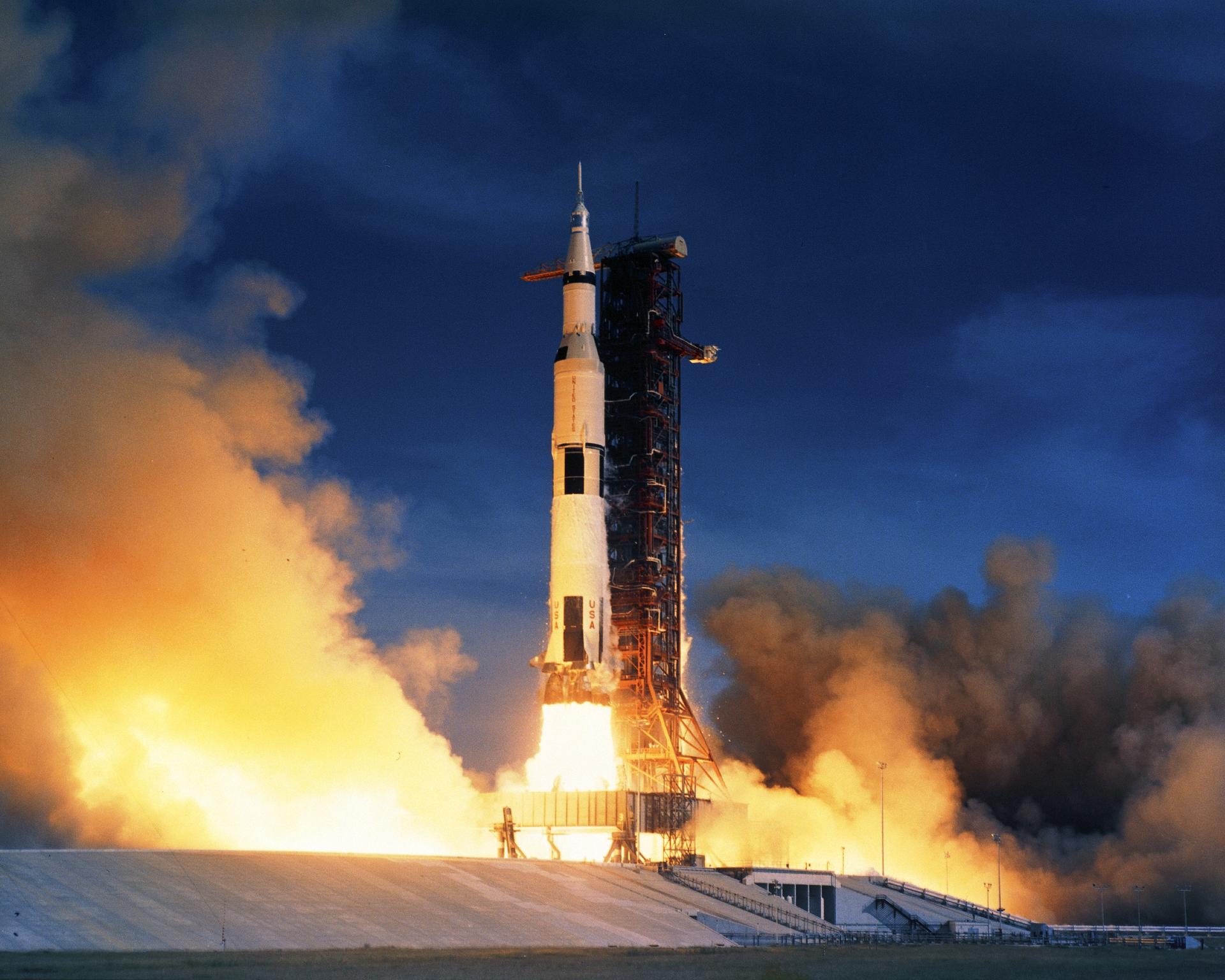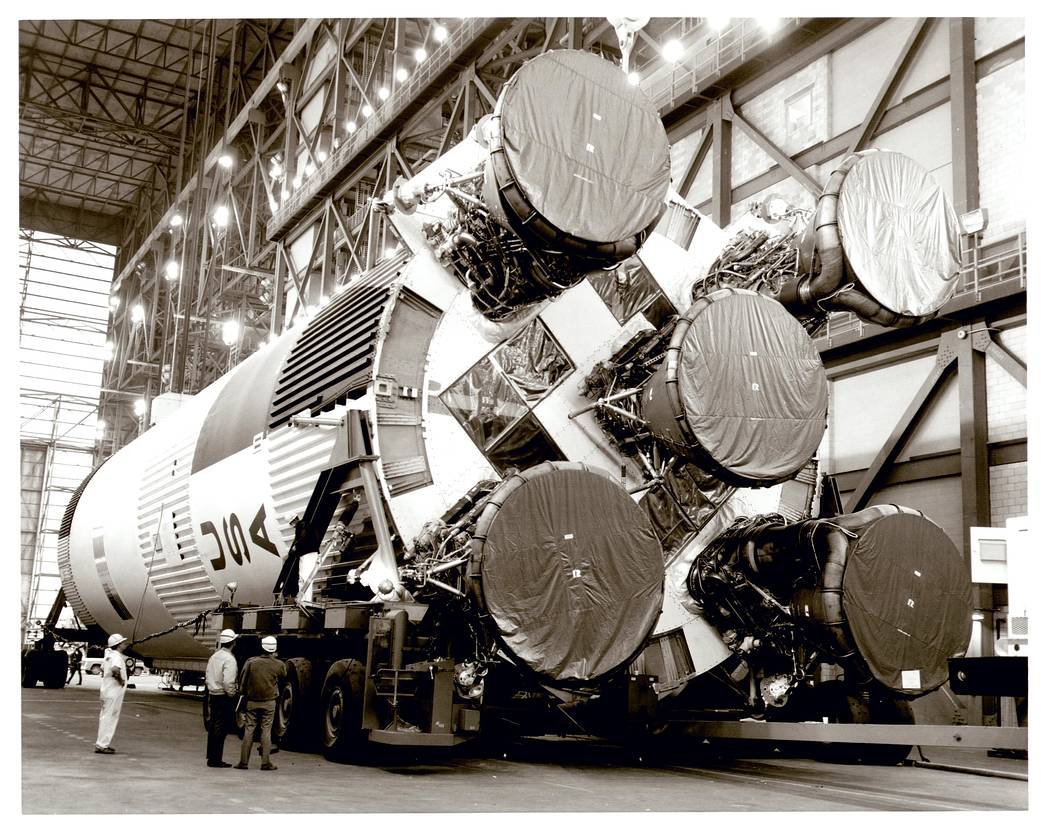This article is for students grades 5-8.
The Saturn V was a rocket NASA built to send people to the moon. (The V in the name is the Roman numeral five.) The Saturn V was a type of rocket called a Heavy Lift Vehicle. That means it was very powerful. It was the most powerful rocket that had ever flown successfully. The Saturn V was used in the Apollo program in the 1960s and 1970s. It also was used to launch the Skylab space station.
____________________________________________________________________________________________
Words to Know
thrust: the forward or upward force produced by the engines of a plane or rocket
____________________________________________________________________________________________
How Big Was the Saturn V?
The Saturn V rocket was 111 meters (363 feet) tall, about the height of a 36-story-tall building, and 18 meters (60 feet) taller than the Statue of Liberty. Fully fueled for liftoff, the Saturn V weighed 2.8 million kilograms (6.2 million pounds), the weight of about 400 elephants. The rocket generated 34.5 million newtons (7.6 million pounds) of thrust at launch, creating more power than 85 Hoover Dams. A car that gets 48 kilometers (30 miles) to the gallon could drive around the world around 800 times with the amount of fuel the Saturn V used for a lunar landing mission. It could launch about 118,000 kilograms (130 tons) into Earth orbit. That’s about as much weight as 10 school buses. The Saturn V could launch about 43,500 kilograms (50 tons) to the moon. That’s about the same as four school buses.
What Is the History of the Saturn V?
The Saturn V was developed at NASA’s Marshall Space Flight Center in Huntsville, Ala. It was one of three types of Saturn rockets NASA built. Two smaller rockets, the Saturn I (1) and IB (1b), were used to launch humans into Earth orbit. The Saturn V sent them beyond Earth orbit to the moon. The first Saturn V was launched in 1967. It was called Apollo 4. Apollo 6 followed in 1968. Both of these rockets were launched without crews. These launches tested the Saturn V rocket.
The first Saturn V launched with a crew was Apollo 8. On this mission, astronauts orbited the moon but did not land. On Apollo 9, the crew tested the Apollo moon lander by flying it in Earth orbit without landing. On Apollo 10, the Saturn V launched the lunar lander to the moon. The crew tested the lander in space but did not land it on the moon. In 1969, Apollo 11 was the first mission to land astronauts on the moon. Saturn V rockets also made it possible for astronauts to land on the moon on Apollo 12, 14, 15, 16 and 17. On Apollo 13, the Saturn V lifted the crew into space, but a problem prevented them from being able to land on the moon. That problem was not with the Saturn V, but with the Apollo spacecraft. The last Saturn V was launched in 1973, without a crew. It was used to launch the Skylab space station into Earth orbit.
____________________________________________________________________________________________
Words to Know
stage: a section of a rocket containing a rocket engine or cluster of rocket engines; the stages usually separate from each other when the fuel is used
____________________________________________________________________________________________
How Did the Saturn V Work?
The Saturn V that launched the Skylab space station only had two stages. The Saturn V rockets used for the Apollo missions had three stages. Each stage would burn its engines until it was out of fuel and would then separate from the rocket. The engines on the next stage would fire, and the rocket would continue into space. The first stage had the most powerful engines, since it had the challenging task of lifting the fully fueled rocket off the ground. The first stage lifted the rocket to an altitude of about 68 kilometers (42 miles). The second stage carried it from there almost into orbit. The third stage placed the Apollo spacecraft into Earth orbit and pushed it toward the moon. The first two stages fell into the ocean after separation. The third stage either stayed in space or hit the moon.
More About the Saturn V:
What Was the Apollo Program?
Who Was Neil Armstrong?
What Is a Rocket?




























